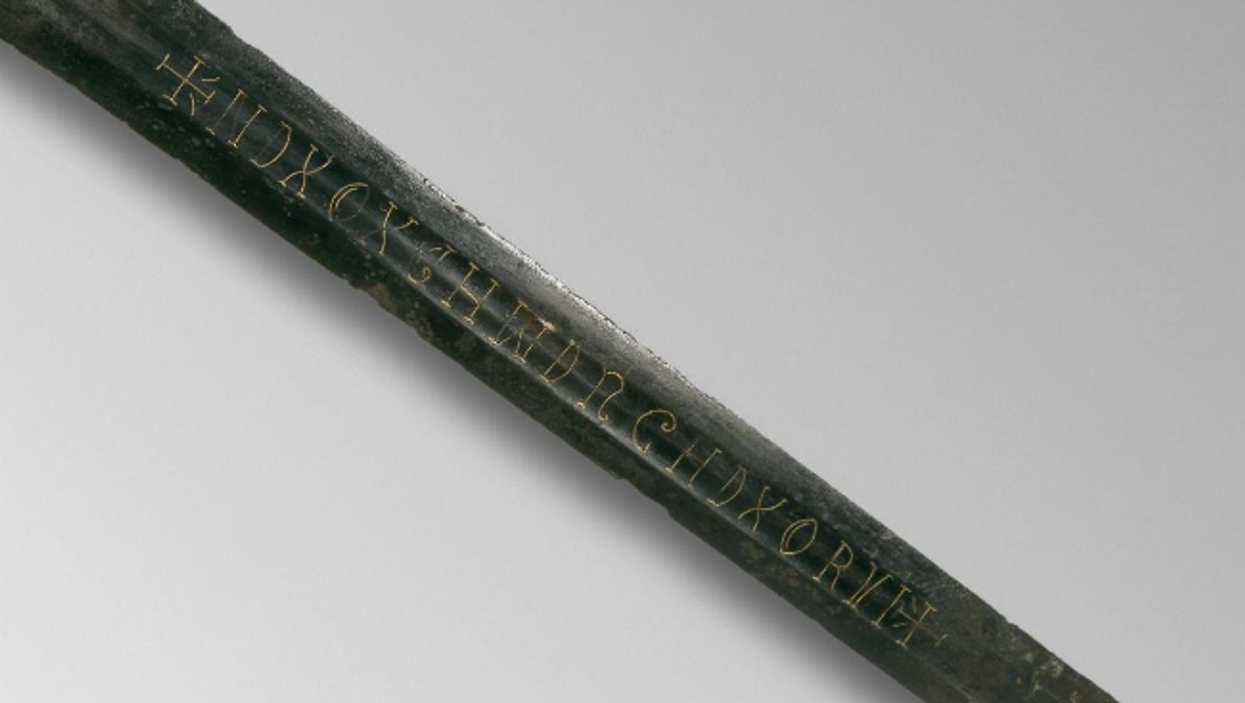Viral
Matthew Champion
Aug 08, 2015

If you like the idea of running around libraries solving your own Da Vinci Code mystery, then this post is for you.
The British Library has put out an open appeal for people to help them solve a riddle that's more than eight centuries in the making - and it's all to do with this sword:
The sword, literally double-edged, can currently be found in the BL's Magna Carta: Law, Liberty, Legacy exhibition, on loan from the British Museum.
It weighs 1.2kg, is 964mm long and 165mm across the hilt - and was found in the River Witham in Lincolnshire in July 1825. It's strong enough to slice a man's head in two, dates to the 13th century and was probably made in Germany. Still with us? Here's where it gets really interesting.
Along the edges of the sword, inlaid in gold wire, is an as yet un-deciphered inscription, which reads:
+NDXOXCHWDRGHDXORVI+
Hm...
The BL thinks it could be a religious invocation, but the language is unknown. The sword is being displayed in the Magna Carta exhibition alongside a 14th-century manuscript showing the French invasion of Normandy in 1203, where men-at-arms wield similar swords.
Since the BL posted its appeal for help this week, it says it has received lots of enthusiastic comments and suggestions - including one from Marc van Hasselt of Utrecht University, who said dozens of similar swords have been found across Europe.
He believes the inscription is in Latin, with NDXOX possibly meaning Nostrum Dominus (our Lord) or Nomine Domini (name of the Lord). The letters that follow could be an invocation in the name of a saint.
He wrote:
By putting together pieces of the puzzle from all over Europe, we might come a little bit closer to solving the mystery. And even if we cannot decipher the inscriptions completely, they might bring us a little closer to understanding our ancestors.
The jury's still out though, and when we look at the inscription all we see is lots of XO - which is either a screaming smiley or the emoji for hugs and kisses.
This is one mystery that's going to run and run. Or hack and slash.
More: The 4,000-year-old mystery that has finally been solved
Top 100
The Conversation (0)














